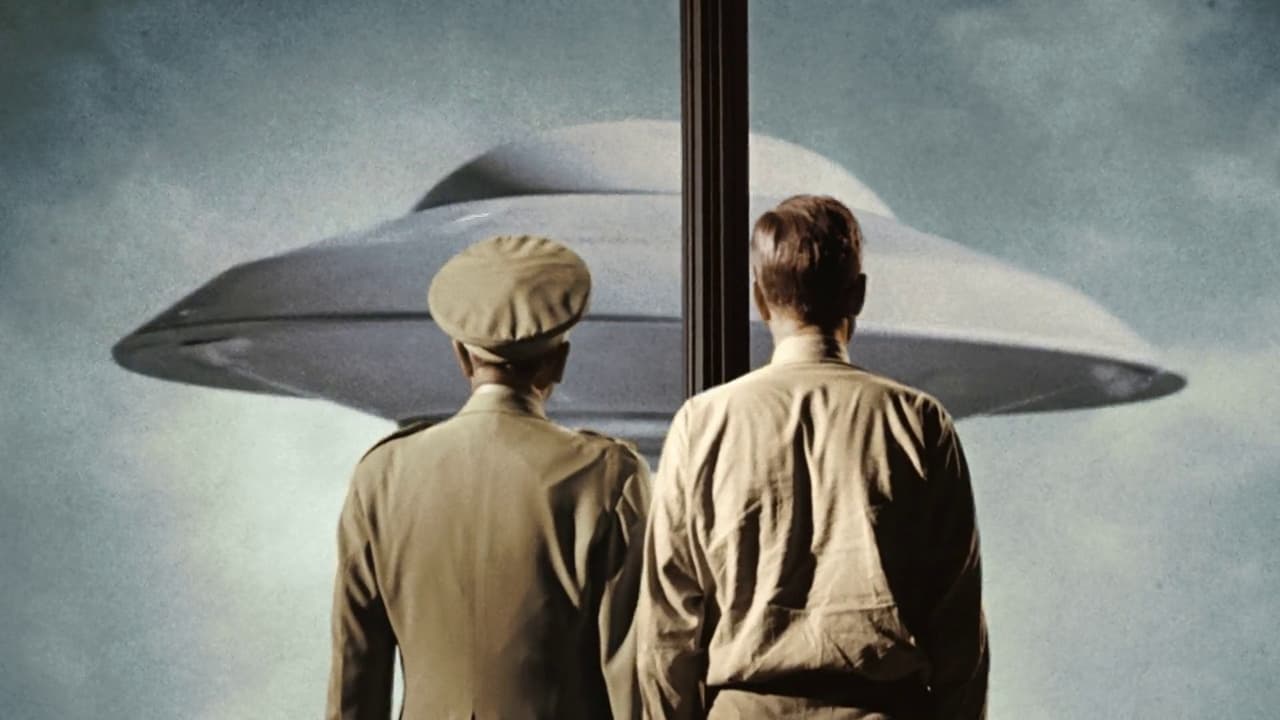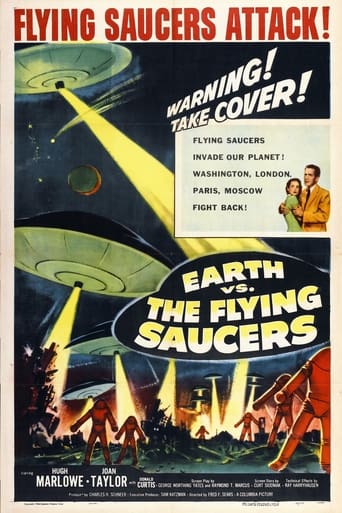



This movie is the proof that the world is becoming a sick and dumb place
View MoreThis is one of the few movies I've ever seen where the whole audience broke into spontaneous, loud applause a third of the way in.
View MoreThrough painfully honest and emotional moments, the movie becomes irresistibly relatable
View MoreTrue to its essence, the characters remain on the same line and manage to entertain the viewer, each highlighting their own distinctive qualities or touches.
View MorePretty hokey to be sure. Some of my favorite parts are when they are driving in their cars...no seat belts, fake backgrounds as they drive through streets, not watching the road while driving at high speeds. Also, after seeing that the big guns didn't shoot through the saucers force field, the foot soldiers decide to shoot the rifles at the saucer. Pretty hokey, but entertaining for sure.
View MoreEarth is invaded by aliens.Mars Attacks! without the comedy....they played it straight in the 1950s and that is the only way to do science fiction.Since my 1970s childhood, sci-fi has always been one of my top interests and movies like Earth Vs The Flying Saucers (and Irwin Allen TV) turned me into a sci- fi nut.In those days there was not much sci-fi around to watch so a re-run of a movie like this was an event. The film is missing a great music score of the type heard in War Of The Worlds (1953) and The Day The Earth Stood Still (1951) but all things considered...it is not too bad at all.
View MoreIf 1950's schlock sci-fi is your cup of tea, you won't be disappointed here. This is what fans like myself live for and have to wait to see until they're aired in places like Turner Classics or in my case, Antenna TV this morning. Had to set the alarm for a 5:00 AM start too, so that has to tell you something.I don't know if Ray Harryhausen was proud of his special effects work in this; everything is still pretty primitive but for 1956 you probably won't find better up close and personal flying saucer work. Obviously the picture's use of the term 'Air Intelligence Command' can be considered an oxymoron today, but then again, it was explained that the scientists back on Earth hadn't been able to track any of the observation rockets sent into space to set up twelve 'moons' because they blew up and fell back down to terra firma. I don't think I'd want to be admitting that if I was in charge of the space program.Lots of goofy stuff here, one of the first instances was when Dr. Russell Marvin (Hugh Marlowe) and his wife Carol (Joan Taylor) perused the horizon for traces of alien activity and you had both day and night time sky at the same time! Flying saucer continuity took a hit as well, as depending on the scene, weapon fire either disintegrated it's target or blew it to smithereens. And even though they seemed invincible when attacking Washington, D.C., they were rather easily shot down by military rockets on their way there. Similarly, the alien life forms inside were impervious to harm when they weren't otherwise being knocked out by innocuous rifle fire!?!?Well look, you either go for this stuff or you don't. Hard to believe there were some intelligent sci-fi flicks coming out around the same time like "War of the Worlds" and "The Day The Earth Stood Still" that puts pictures like this to shame, but you can have a lot more fun with the silly stuff. For a double header treat, try catching this one back to back with "Teenagers From Outer Space". You'll never be the same again.
View MoreWell, I just saw this movie because I read some fantastic reviews about it... It stinks. Nowadays it looks as primitive as those automatic pianolas from the 19th Century. After half an hour or so I started skipping scenes and moving forward because unable to stand it much longer.The whole principle of the story is the worst part of it, because, why-oh-why the scientists were never believed by the military men and they always shot first and listen later??The aliens came over with good intentions, but the earthlings didn't give them time to say Hello! that they were already shot to death!! Ridiculous stuff.These movies were all the same, the military shot first without even listening to the intelligent scientists or the super-intelligent aliens, so they looked really like pathetic morons.I think that even nowadays the Science Fiction movies follow the same pattern, the earthlings never listen to the aliens, they always shoot, shoot and shoot!!! Even if the aliens display formidable weapons, the military don't seem to grasp their fabulous power and keep shooting away. Sad display of our low grade intelligence... (and not only WITHIN the movie).I just wasted one hour of my precious time watching this utter garbage.
View More